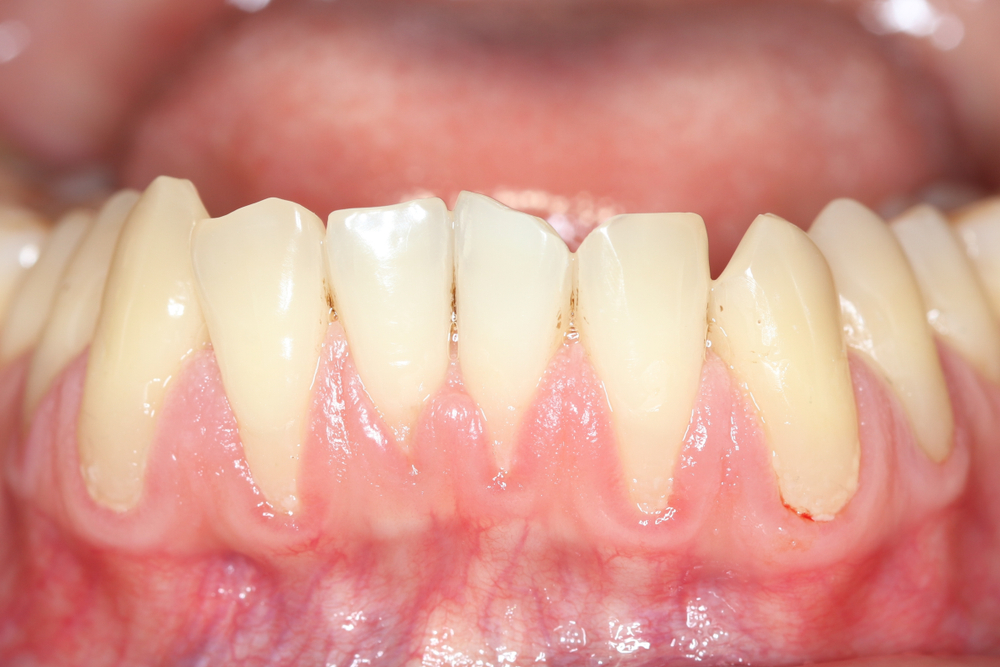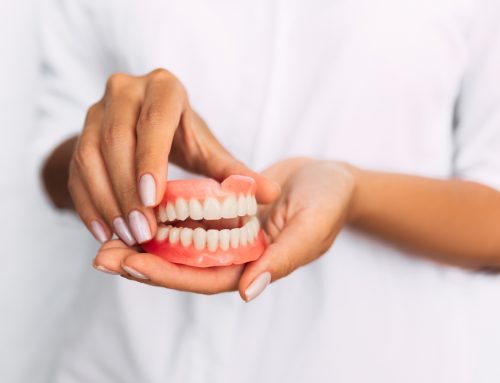Receding gums are an immediate sign that something is wrong due to gum tissue deteriorating and leaving the tooth dangerously exposed. Once exposed, these small spaces allow plaque, a sticky film of bacteria to collect and grow leading to further recession of the gums around the teeth. Eventually, this leads to the loss of bone and the teeth affected. But we often get the question: Can receding gums grow back?
The short answer is no, receding gums do not grow back. However, there are options available and things you should understand about your teeth and gums. Let’s discuss gum recession and ways to reverse it.

Reversing Gum Recession
Are you looking to reverse the damage from plaque buildup and gum recession? Here’s what you should know.
First, Gum Recession Takes Time
There’s a 99% chance or greater that your gums didn’t recede over night. When it comes to oral healthcare and dental care, natural solutions aren’t simple. You only get one set of adult teeth and your gum tissue isn’t meant to grow back either. Your teeth weren’t really meant for the diet we eat today and thus many people suffer with gum disease and tissue damage.
If you notice any gum recession, you should take immediate action and speak to your Keller Family Dentist, Dr. Tyson Pickett, DDS FAGD immediately. Take a look at the symptoms for signs that gum recession is occurring.
- Tooth sensitivity
- Certain teeth look longer than before
- A rough spot or notch can be felt at the gum line
- Pain at the gum line
- Red, swollen gums that frequently bleed when brushing or flossing
Second, Healthy Habits Prevent Gum Recession
It really all comes down to your typical oral healthcare routine. Are you brushing twice a day gently and flossing after meals? Do you punish your gums with sugar and acidic foods or are you providing a healthy diet with plenty of calcium and vitamin D?
Be sure you ARE brushing regularly. Be sure you ARE NOT brushing too hard. Be aware that age and lifestyle play a role as well as autoimmune conditions. These are important to be brought up to your dentist at your regular 6-month dental cleanings.
Third, Some People Swear By Natural Remedies
Many people claim that several natural remedies can treat receding gums. Some of the most popular ones include:
- oil pulling
- using aloe vera
Each of these remedies may improve your oral health. We don’t recommend these, because they are anecdotal and still unsubstantiated. However, reducing inflammation is always helpful. Look at your lifestyle, diet and supplements to see if there’s are ways you can reduce your inflammation in the body.
While all this research suggests that these natural remedies may be beneficial to your oral health, none of them demonstrated any ability to make gum tissue grow back. There’s no treatment — natural or medical — that can make receding gums grow back.
What We Can Do For Receding Gums
Even though receding gums won’t grow back, there are still several things you can do to prevent them from receding more. There are also some procedures that can reduce the appearance of receding gums.
Slow down the process
Start by making an appointment with your dentist. They’ll measure how far your gums have receded to determine the most effective next steps. If you have bacteria in the small spaces created by receding gums, they’ll likely start with a deep cleaning procedure called scaling and root planing. If the damage isn’t severe this may be all that’s needed with a proper oral healthcare plan.
Scaling and root planing involves scraping away tartar from your teeth and under your gum line. It’s done with either a hand-held scraper or an ultrasonic device that uses vibrations to loosen and remove plaque.
In some cases, Dr. Pickett might apply a slow-release antibacterial gel under your gum line or prescribe an antibiotic mouthwash. That will be discussed at your appointment if necessary.
This is often the first step in treating receding gums, since removing bacteria can slow down and sometimes even halt the process. To maintain the results, you’ll need to follow up with good oral hygiene to avoid future buildups of plaque.
Good oral healthcare includes:
- gently brushing your teeth twice a day with a soft-bristled brush
- flossing in between your teeth daily before brushing
- going in for regular dental cleanings every three to six months
Consider Surgery
For more severe cases, your dentist might suggest surgery to remove bacteria that’s deep under your gums or to replace missing gum tissue.
Common surgical treatments include:
Flap surgery – Our Keller dentist will make a small incision in your gum tissue to lift it up and remove any plaque they couldn’t get to during the scaling and root planing procedure. After Dr. Pickett has removed the bacteria, he will secure your gum tissue in place. This can prevent eventual bone loss.
Gum graft – An oral surgeon will take gum tissue from another part of your mouth and surgically place it around the receding area. This can both reduce the appearance of receding gums and protect your tooth and bone from future damage.
Bonding – Gum-colored resin can be placed over the roots of your affected teeth. This both reduces the appearance of receding gums and protects the sensitive roots of your teeth.
A Quick Summary in Regards to Reversing Gum Recession
- Receding gums are a common condition. Even with good oral hygiene habits, aging and genetics can still cause gum loss.
- While your gum tissue can’t grow back, there are many treatment options that can help stop or slow down the process.
- Work with your Keller dentist to figure out the most effective treatment option based on your general oral health and the amount of recession you have.



